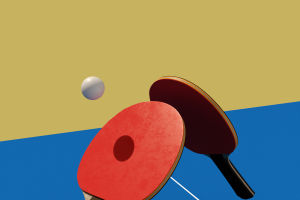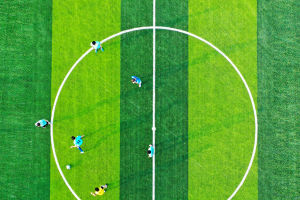Billiards is an indoor sport. It is usually played on a specially designed pool table with six pockets and a set of balls. Billiards is a game of skill and strategy that requires players to use accurate hitting techniques to pocket the ball and take strategic decisions to gain an advantage.
In the traditional game of billiards, the balls used are composed of 15 red balls and 6 colored balls. Red balls are arranged in a triangular shape and placed at one end of the pool table, and colored balls are scattered across the table.
The player uses a white ball as a batting ball and moves the ball by hitting it with a club. The goal is to hit the other balls with the white ball, pocketing them while trying to avoid scoring points for your opponent.
Besides the traditional pool game, there are some other pool variants such as nine ball, eight ball, snooker, etc. Each variant has some special rules and ways of playing it, but basic hitting skills and strategic thinking are important in different games.
As a global sport, billiards has a wide range of amateur and professional competitions in many countries. The International Billiards Federation is one of the most important billiards organizations in the world, responsible for managing and promoting various billiards competitions, including the World Billiards Championships.
Whether played as a recreational activity or as a professional competitive sport, billiards can provide fun and challenge while developing players' focus, coordination, and strategic thinking.
In billiards, there are many different styles of play and techniques, the following are some of the common ones:
1. Straight Shot: This is the most basic way of hitting the ball, that is, aiming the club at the target ball and hitting it in a straight line. This style of play is usually used when the distance of the shot is short and there are not many obstacles.
2. Bank Shot: When the target ball is not in a straight line, or you need to avoid other balls, you can choose to hit the ball diagonally. Change the direction of the ball by changing the angle and power of the shot so that the white ball hits the edge on one side.
3. Spin shot: The spin shot is to apply spin to the white ball when hitting the ball. Through the different positions of the hitting point and the direction of rotation when hitting the ball, the rotation trajectory of the ball can be changed. This type of shot is often used to control the angle and bounce of the ball.
4. Keeping the ball: Keeping the ball is a strategic way of hitting the ball to keep the opponent from continuing to score and create a favorable situation for yourself. In holding the ball, you can place the white ball in a relatively safe position, or deliberately place the opponent's ball in an unfavorable position, making it more difficult for the opponent to hit the ball.
5. Combination Shot: A combination ball refers to hitting a ball with a white ball so that it hits another ball and enters the bag. This style of play is usually used when there are other balls between the target ball and the pocket to increase the chance of scoring.
6. Position Play: Watching the ball refers to letting the white ball stay in a favorable position after hitting the ball so that the next shot can be easier to hit the ball into the pocket. This requires considering the position and angle of the ball, as well as anticipating the path of the next shot.
Playing pool takes skill and practice, here are some common tips and advice:
Ready position: A balanced ready position is very important. Stand with feet shoulder-width apart and planted on the ground. The body stays steady, and maintaining a steady balance helps to hit the ball accurately.
Crosshair aiming: Learning to aim accurately is the key to playing billiards well. Usually, align the crosshair of the club with the target ball and the pocket, and then focus on the target ball. Practice and become familiar with the trajectory and angle of the ball so that you can accurately aim and adjust the power and angle of your shots.
Hitting power: It is very important to master the control of hitting power. The power of hitting the ball should be adjusted according to the distance of the target ball and the skill of hitting the ball. Gradually master the feeling of different hitting strengths in practice, so that you can adjust flexibly in actual games.
Cue Ball Contact Point: The choice of hitting point will also affect the trajectory of the ball. Generally, hitting the ball closer to the center of the white ball produces straight-line motion, while hitting the ball closer to the top and bottom produces up-and-down spin. Practice the use of different hitting points and understand how they affect the motion of the ball.
Follow, Draw, and Stun: Learn to use different impact styles to produce different effects. "Follow" means to move the white ball forward when hitting the ball, "Draw" means to make the white ball spin backward, and "Stun" means to hit the ball in a straight line without spin. Mastering these different impact styles allows for more control and effect in your shot.
Visualization and Imagination: When playing billiards, visualizing and imagining the process of hitting the ball and the result can help improve accuracy and tactical awareness. Before hitting the ball, imagine the trajectory of the ball and the situation of entering the pocket, which can help improve the accuracy and effect of hitting the ball.
Practice and Experience: The most important thing is to continue to practice and accumulate game experience. Improve your competitive level by repeatedly practicing various batting skills and strategies in situations, plus participating in competitions.


